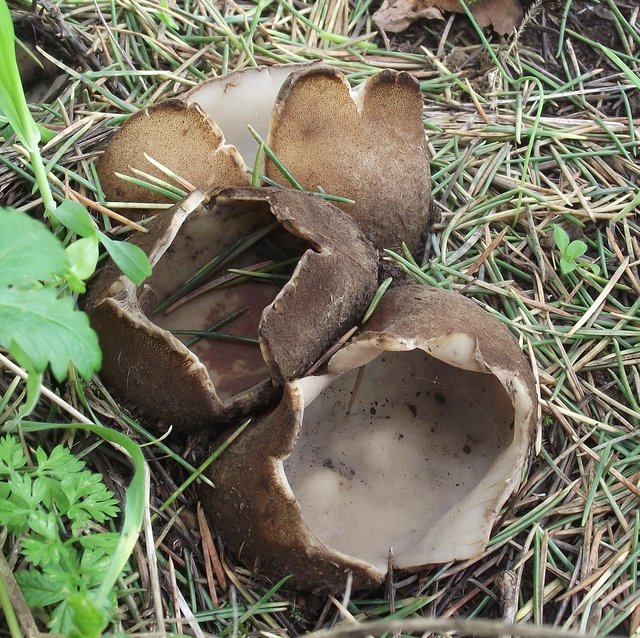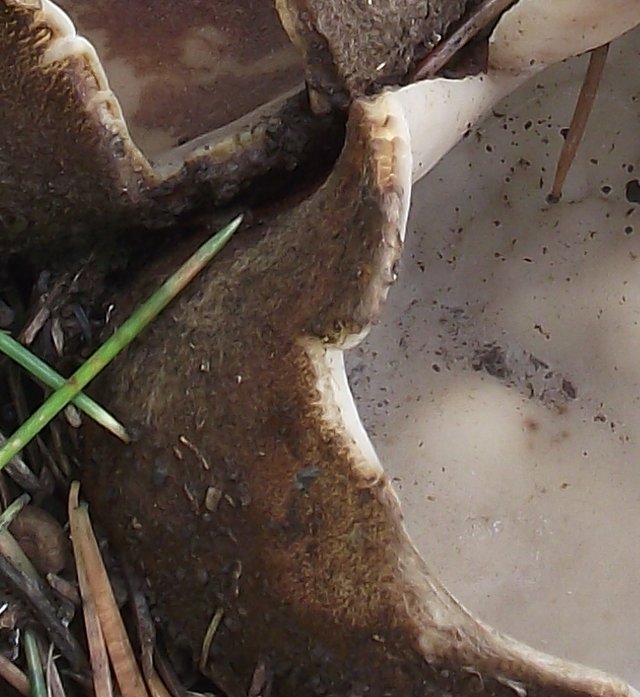Geopora Sumner (Geopora sumneriana)
- Department: Ascomycota (Ascomycetes)
- Subdivision: Pezizomycotina (Pezizomycotins)
- Class: Pezizomycetes (Pezizomycetes)
- Subclass: Pezizomycetidae (Pezizomycetes)
- Order: Pezizales (Pezizales)
- Family: Pyronemataceae (Pyronemic)
- Genus: Geopora (Geopora)
- Type: Geopora sumneriana (Geopora Sumner)
:
- Lachnea sumneriana
- Lachnea sumneriana
- Sumnerian burial ground
- Sarcosphaera sumneriana

The Sumner Geopore is a fairly large geopore, much larger than the Pine Geopore and the Sandy Geopore. This species grows in small groups and is found exclusively where cedar trees grow.
At the initial stage of development, the fruiting body has a spherical shape and is almost completely hidden underground. Gradually, as it grows, it takes the form of a dome and, finally, comes out on an open surface.
An adult mushroom has a more or less star-shaped cupped shape, does not unfold to a flat saucer. In adulthood, the diameter can exceed 5-7 cm. Height – up to 5 cm.
Peridium (wall of the fruiting body) brown. The entire outer surface is covered with very narrow long hairs of brown tones, the hairs are especially densely located in young specimens.

Hymenium (inner side with spore-bearing layer) perfectly smooth, cream to light gray in color.
Under the microscope:
Asci and spores are distinguished by their large size. Spores can reach 30-36*15 microns.
Pulp: quite thick, but very fragile.
Smell and taste: almost indistinguishable. Geopore Sumner smells the same as the substrate from which it grew, that is, needles, sand and dampness.
Inedible.
Considered a spring species, there are reports of finds in March and April. However, it is possible that during warm winters the fruiting body may come to the surface in January-February (Crimea). Grows in large groups in cedar forests and alleys.
Geopore Sumner is very similar to Geopore pine, and if spruces and kerds are present in a coniferous forest, it may be difficult to accurately determine the type of geopore. But this is unlikely to have any serious gastronomic consequences: both species are unsuitable for human consumption. However, one Italian site published a simple and reliable way to distinguish the Sumner geopore from the pine one: “in case of doubt, one look at the size of the spores can dispel these doubts.” So I imagine an amateur mushroom picker with a basket in which a microscope is carefully placed, right between breakfast and a bottle of mineral water.









